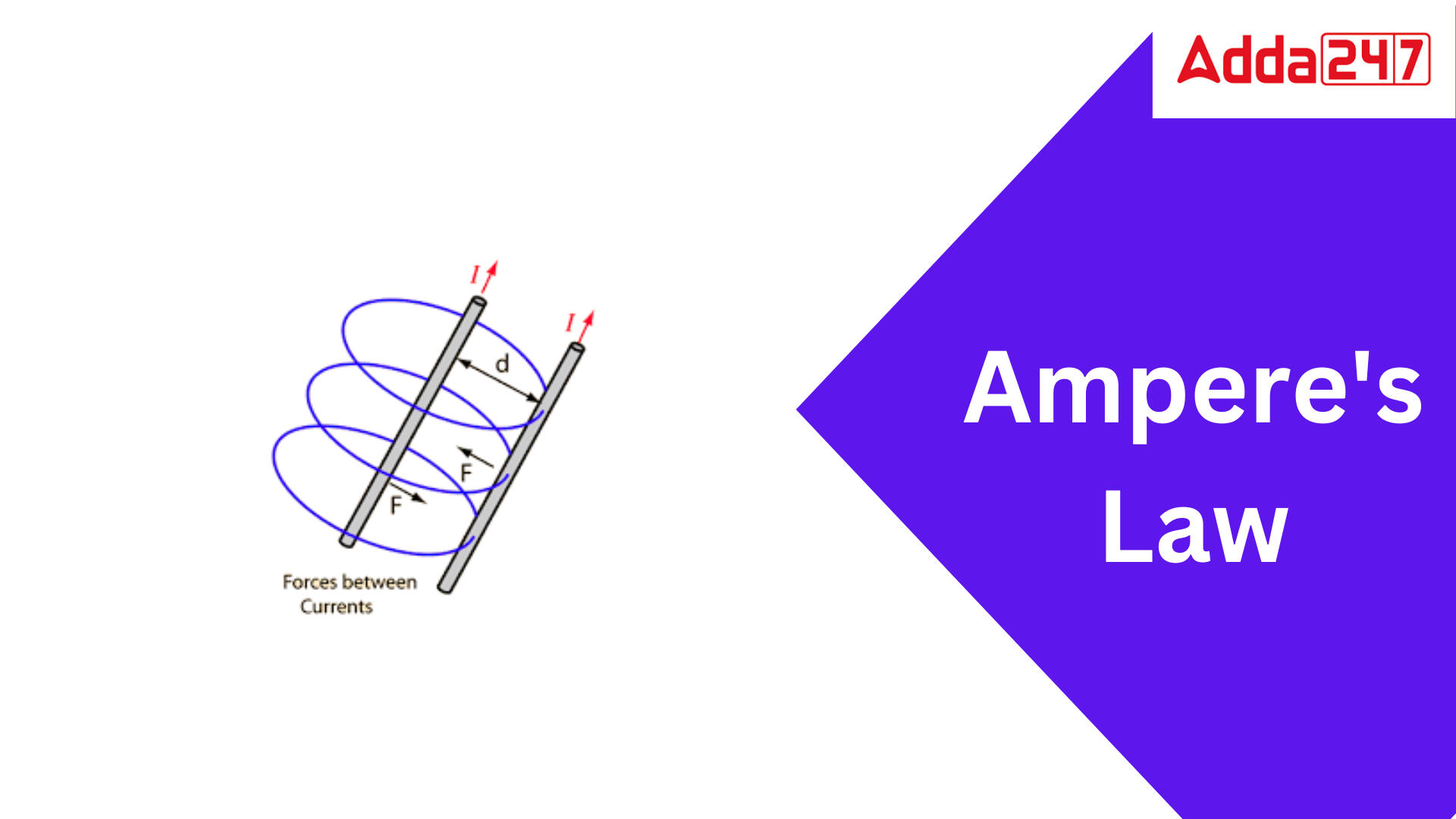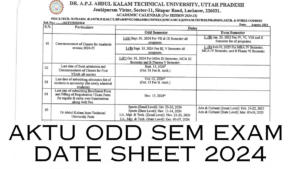Table of Contents
Ampere’s Law: Ampere’s Law is an electromagnetic fundamental law that connects the magnetic field produced by an electric current to the current itself. André-Marie Ampère developed it first in 1826. According to Ampere’s Law, the line integral of the magnetic field around a closed loop equals the product of free space permeability and total current enclosed by the loop. In other words, the magnetic field lines form a closed loop around a current-carrying conductor. The magnetic field strength at a given point is proportional to the current flowing through the conductor and the distance from the conductor. One of four Maxwell’s Equations, a collection of equations that describes the behaviour of electric and magnetic fields, is Ampere’s Law. Gauss’ Law for Electricity, Gauss’ Law for Magnetism, and Faraday’s Law of Induction are the other three of Maxwell’s Equations. Ampere’s Law is widely used in electrical engineering and physics. It can compute the magnetic field produced by a current-carrying wire, construct electric motors and generators, and investigate electromagnetic wave propagation.
What is Ampere’s Law Definition?
According to Ampere’s law, magnetic fields are related to the electric current created in them. The rule specifies the magnetic field associated with a particular current or vice versa, assuming that the electric field does not change over time.
Ampere’s Law is expressed as follows:
“The magnetic field created by an electric current is proportional to the size of that electric current, with a constant of proportionality equal to the permeability of free space.”The final Maxwell’s equation, which explains Ampere’s law, is presented below:
Ampere’s Law Formula

Who is André-Marie Ampère ?
André-Marie Ampère was a French physicist and mathematician who is credited with establishing electromagnetic. He is well known for discovering Ampere’s Law, which connects an electric current’s magnetic field to the current itself.Ampère was born on January 20, 1775, in Lyon, France. He was a self-taught prodigy who studied maths and physics at a young age. He was appointed mathematics professor at the École Polytechnique in Paris in 1796.Ampère’s interest in electromagnetism began in 1820 when he learned of Hans Christian Rsted’s discovery that a current-carrying conductor generates a magnetic field. Ampère was interested in Rsted’s discovery and decided to go into it more.Ampère released his first work on electromagnetism in 1822, laying forth the fundamental laws of electromagnetic force. His research was founded on the notion that electricity and magnetism are two sides of the same coin. He demonstrated that the magnetic field produced by a current-carrying conductor is proportional to the current and inversely proportional to the conductor’s distance.
Ampere’s Circuital Law
The line integral of the magnetic field around the closed loop equals the algebraic total of currents going through the loop, according to Ampere’s circuital equation. If a conductor carries a current I, the current flow generates a magnetic field surrounding the wire. The left side of the equation states that if an imaginary road encircles the wire and the magnetic field is added at each location, it is numerically equivalent to the current encompassed by this route, denoted by Inc.

Ampere’s Law Examples
Some of the most important applications and examples are as follows:
- Using a current-carrying conductor to calculate the magnetic field: The magnetic field created by a current-carrying conductor can be calculated using Ampere’s Law. This is accomplished by integrating the magnetic field over a closed loop encircling the conductor. The outcome is a magnetic field strength expression at a location in space that is proportional to the current flowing through the conductor and the distance from the conductor.
- Electric motors and generators are machines that transform electrical energy into mechanical energy and vice versa. They function by generating a magnetic field that interacts with a current-carrying conductor utilising Ampere’s Law. The interplay of the magnetic field and current generates a force that can be employed to turn a motor or generate energy.
- The study of electromagnetic wave propagation: Electromagnetic waves are waves of electric and magnetic fields that flow through space. Ampere’s Law, which relates the magnetic field to the electric field, can be used to examine the propagation of electromagnetic waves. This relationship is used to determine the speed of electromagnetic waves and to investigate their behaviour in various mediums.
- Magnetic levitation is a technology that enables items to float over a surface without touching it. It works by generating a repulsive force between the object and the surface utilising magnetic fields. By calculating the magnetic field strength required to induce the repulsive force, Ampere’s Law can be used to develop magnetic levitation systems.
- Magnetic resonance imaging (MRI): MRI is a medical imaging method that creates images of the inside of the body by using magnetic fields and radio waves. The magnetic field strength required to make the images can be calculated using Ampere’s Law.
- Magnetic fields in space: Magnetic fields in space can be studied using Ampere’s Law. Stars, planets, and other celestial objects generate magnetic fields throughout space. Ampere’s Law can be used to compute magnetic field intensity at various sites in space and to examine magnetic field behaviour.


 JEE Mains Revised Reservation Criteria a...
JEE Mains Revised Reservation Criteria a...
 AKTU Odd Sem Exam Date 2024-25, Check 1s...
AKTU Odd Sem Exam Date 2024-25, Check 1s...
 NEET PG 2025 Exam Date, Registration, El...
NEET PG 2025 Exam Date, Registration, El...






























